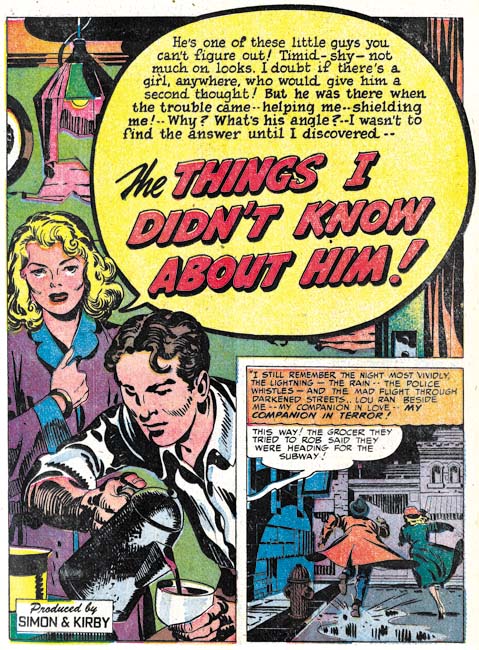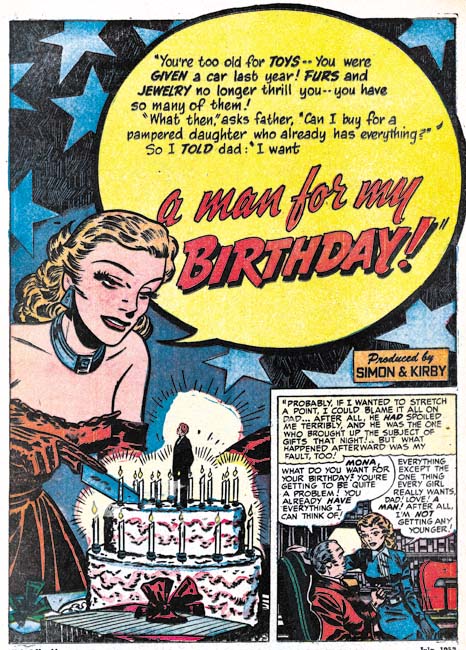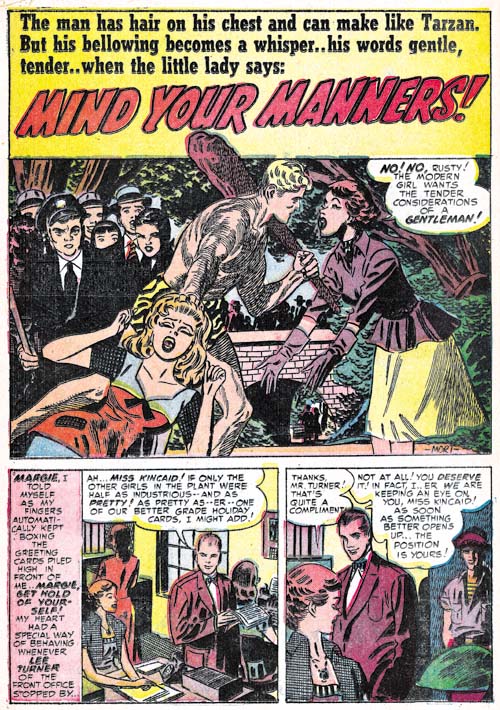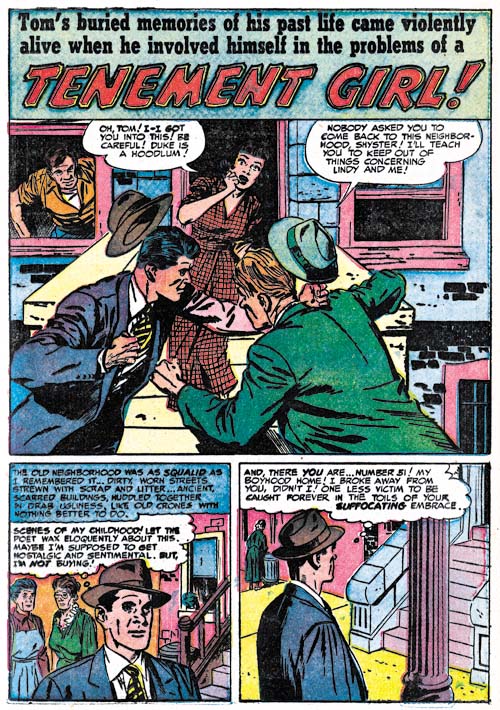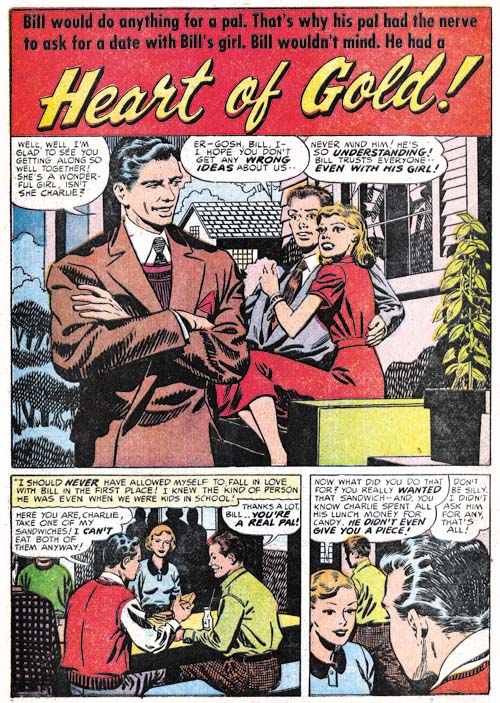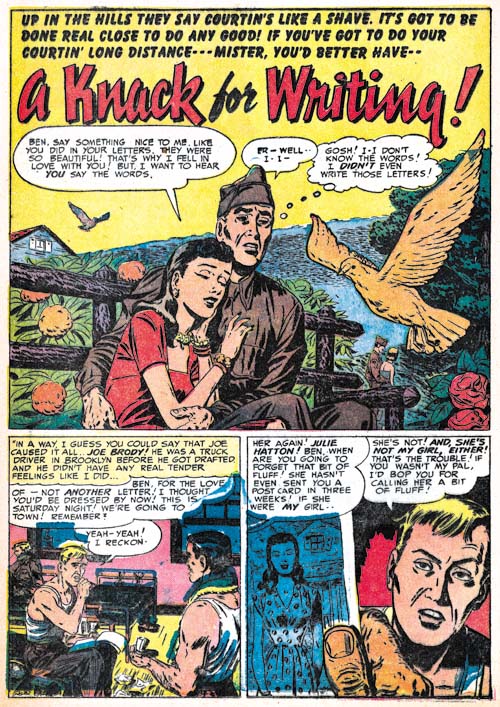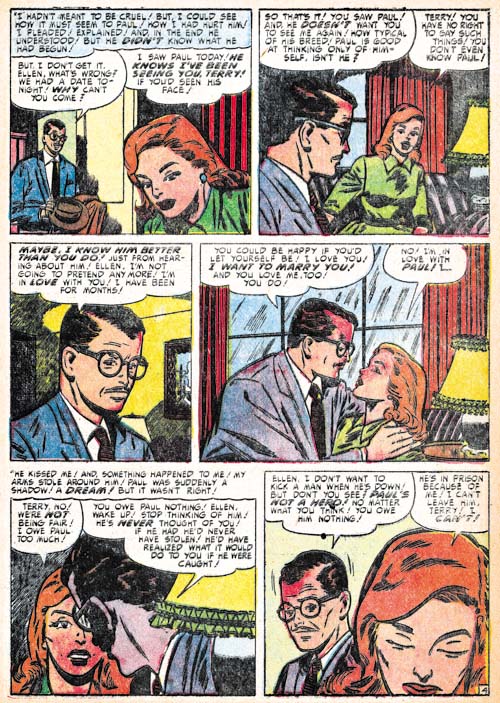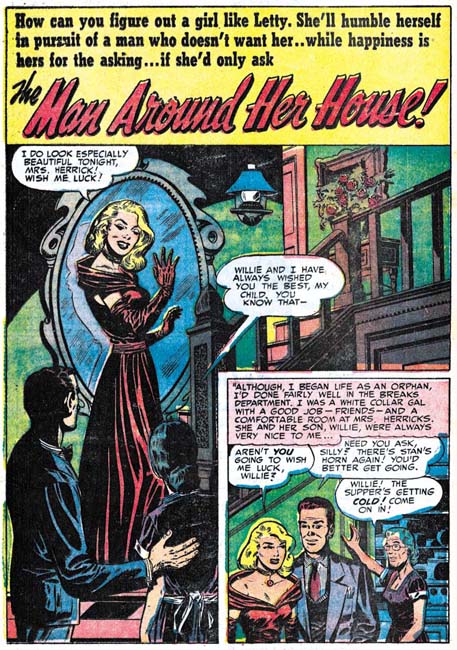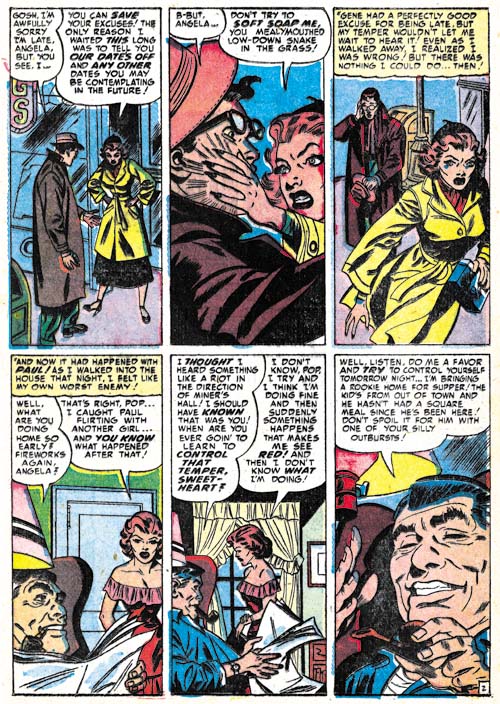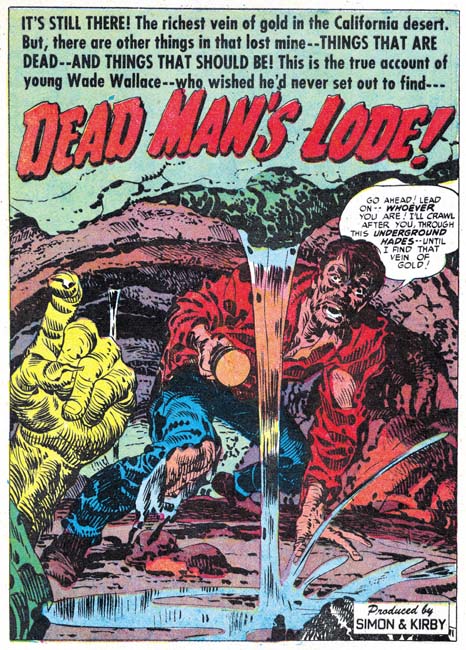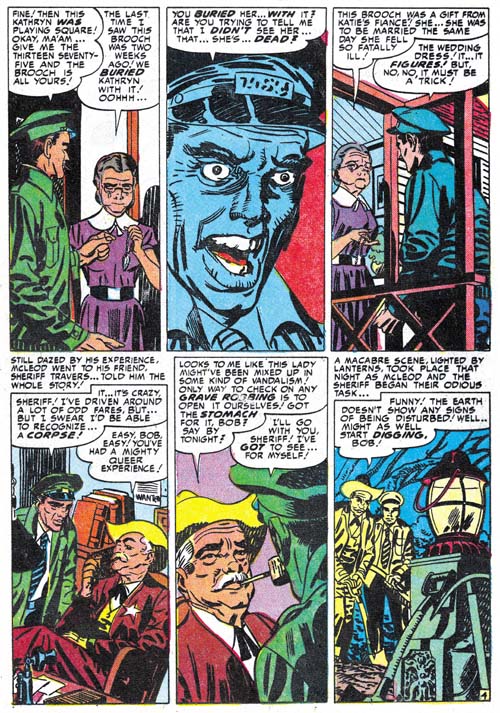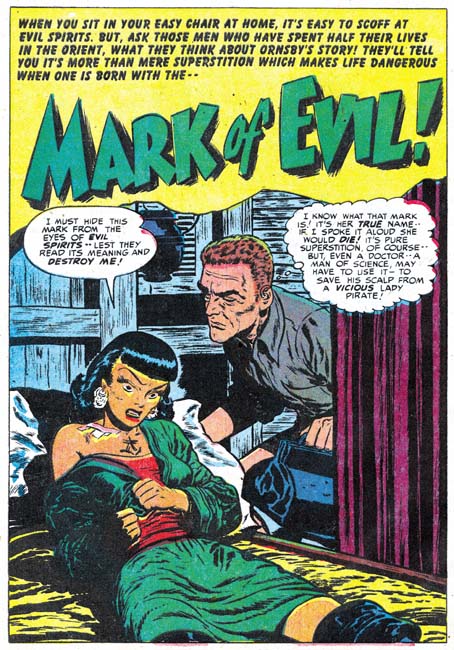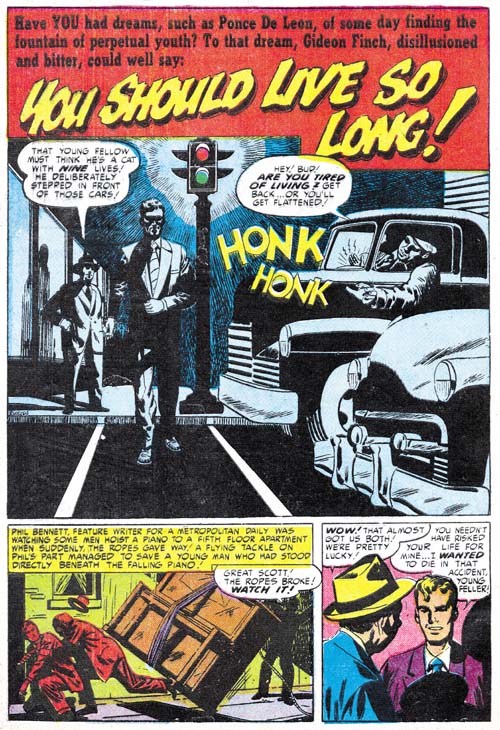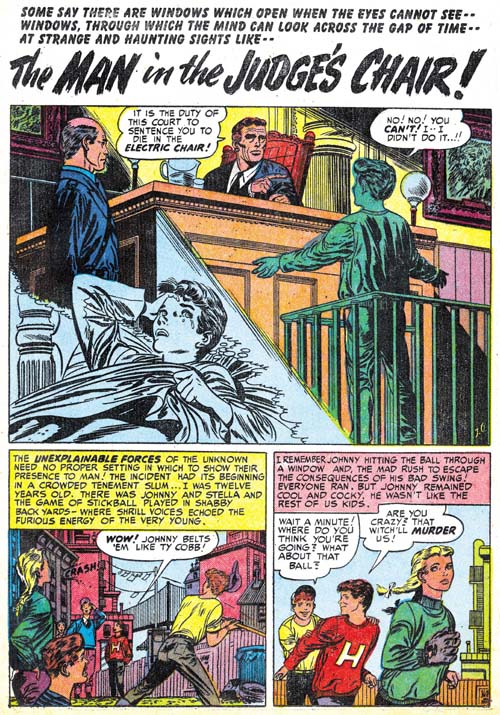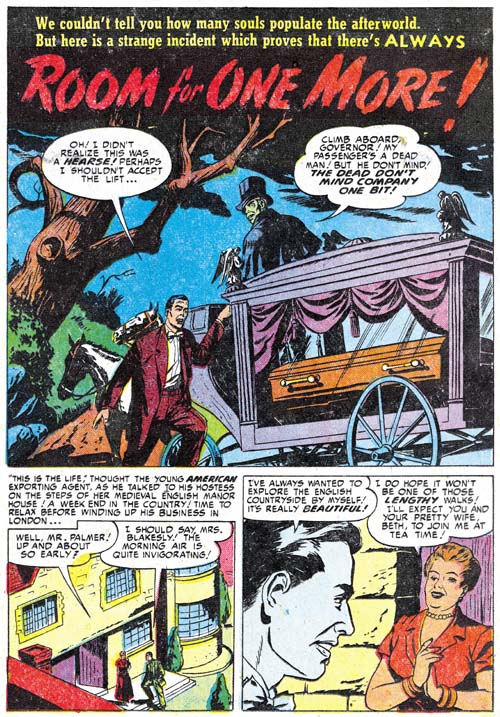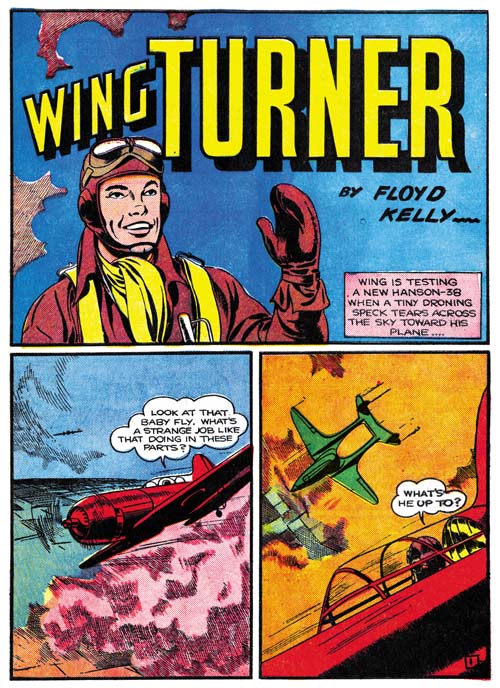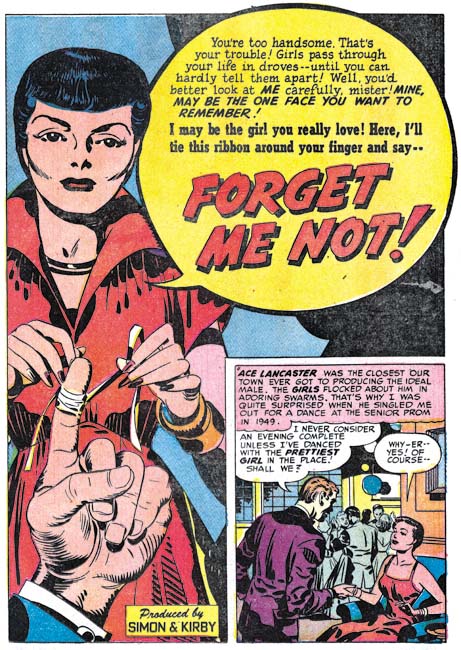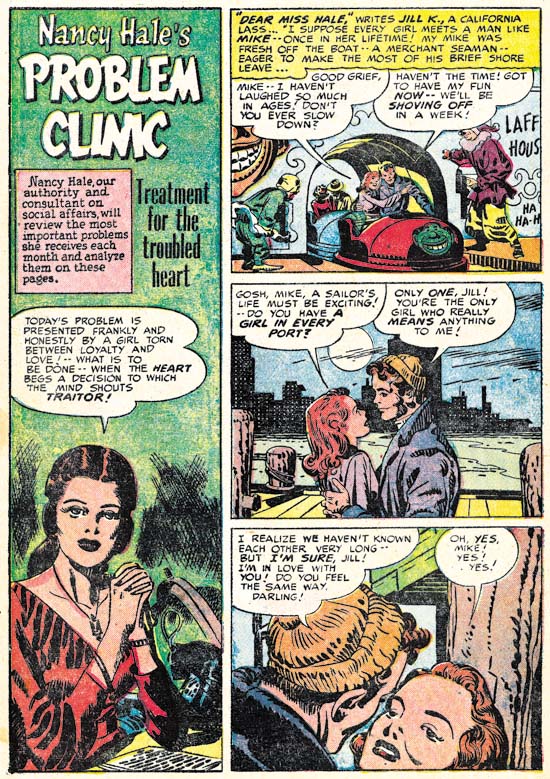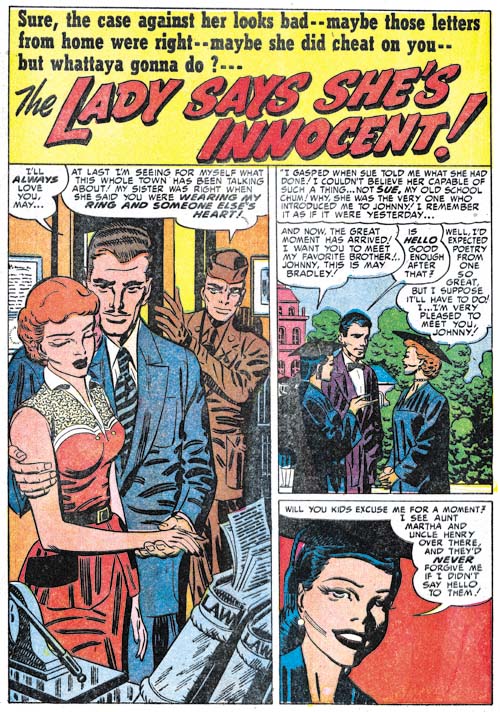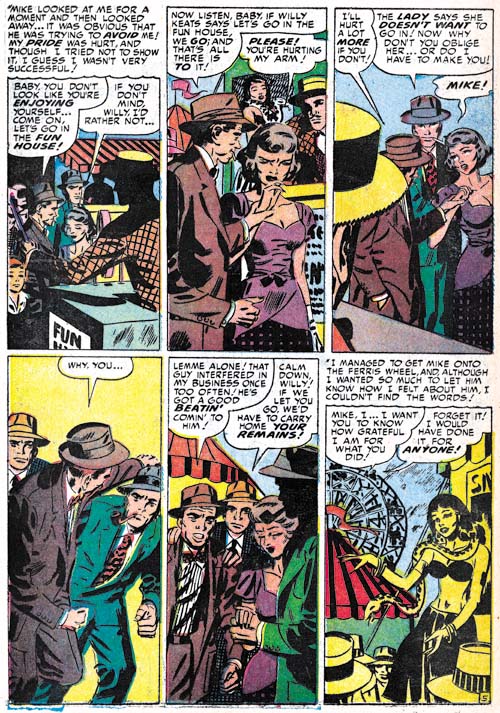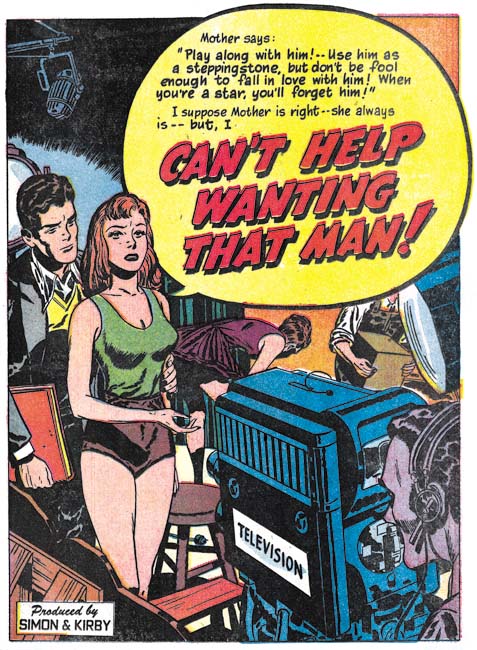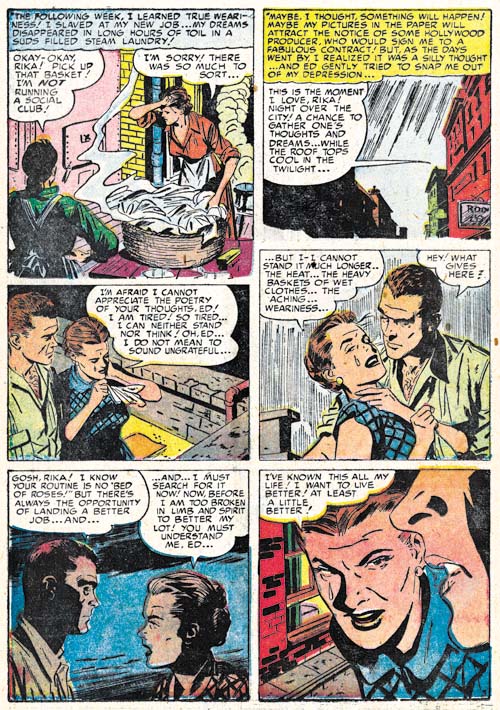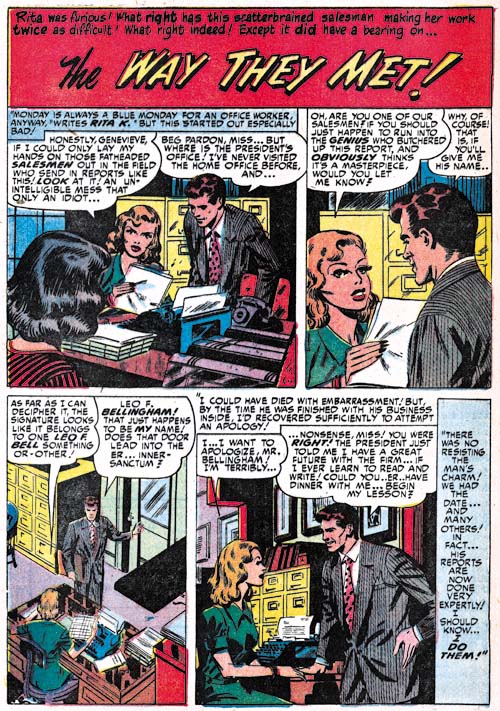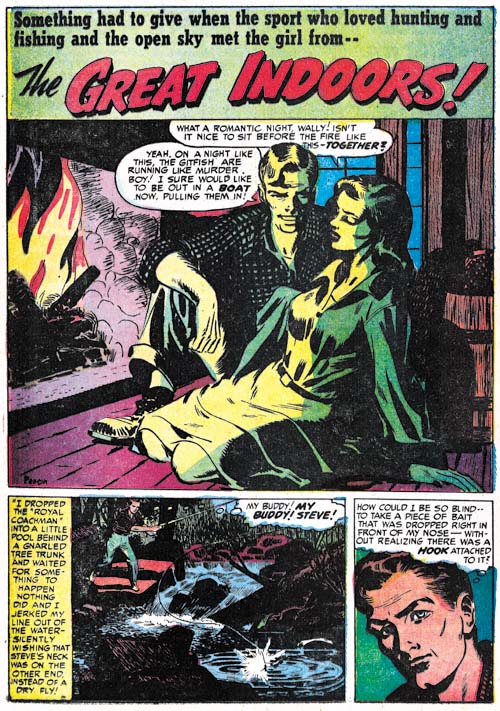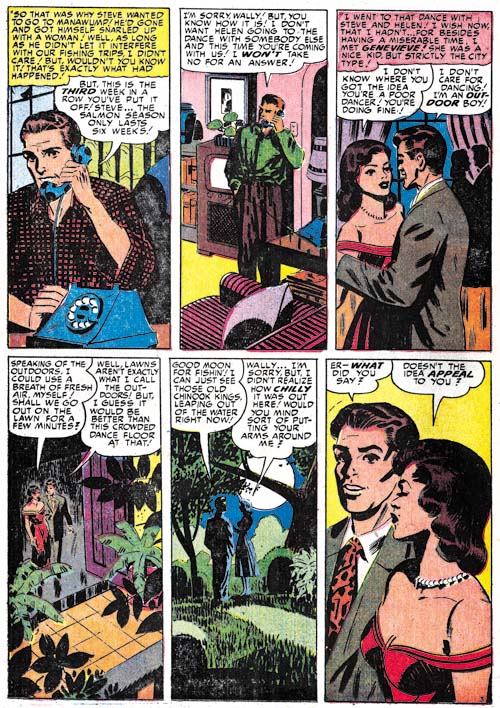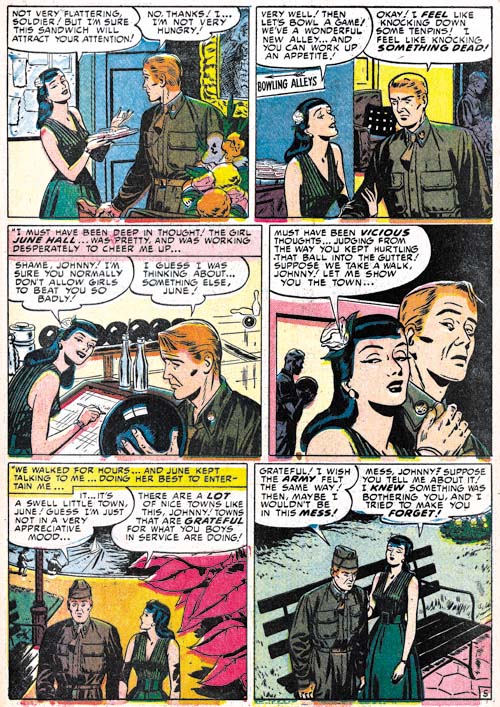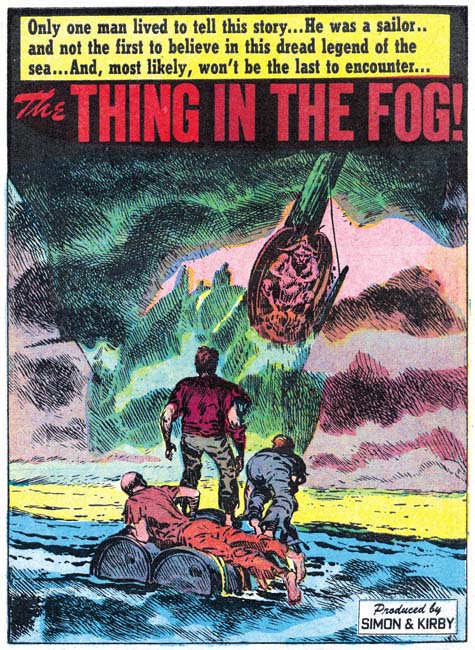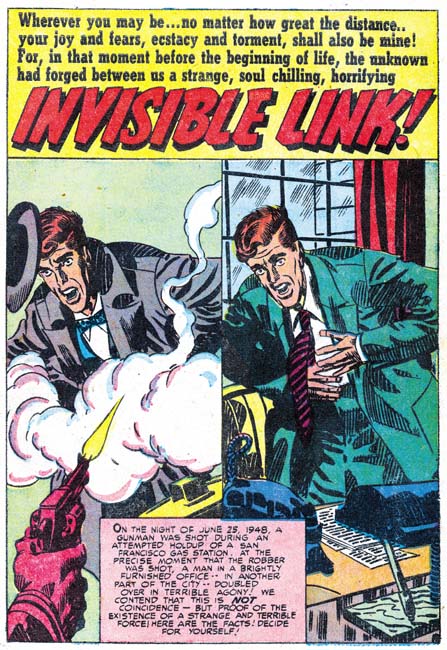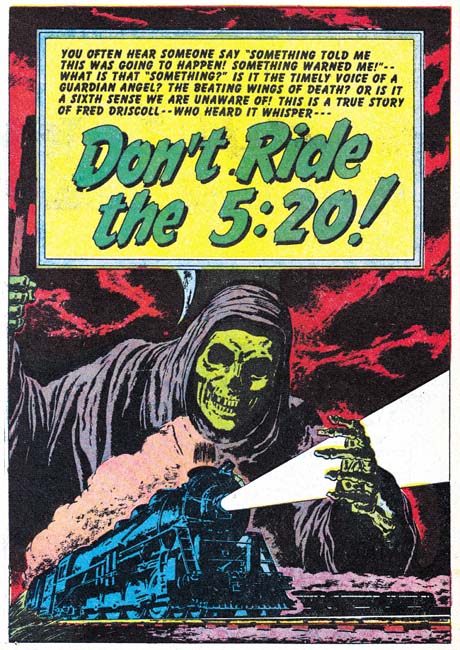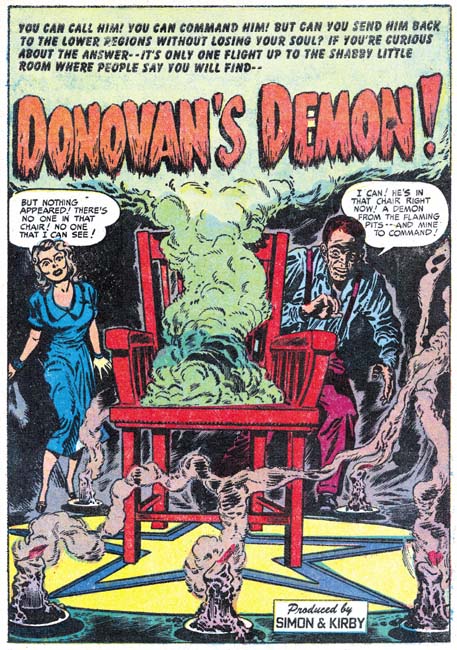(August – October 1952, Black Magic #15 – #17)
I normally like to start the chapters of my recent serial posts with a discussion about the amount that of the various artists contributed to the issues. Usually just a few artists, sometimes even just one, predominate. But in the Black Magic issues covered in this chapter a much more evenly distributed situation occurred. The ranking is George Roussos (19 pages), Jack Kirby (18 pages), Bob McCarty(?) (15 pages), Bill Draut (14 pages), Mort Meskin (13 pages), Bill Walton (7 pages) and Al Eadeh(?) (7 pages). While during the same period in the romance titles, Jack Kirby provided very little art, in the horror genre he takes second place. Kirby has not held that position for in any genre for some time.

Black Magic #15 (August 1952) “The Angel of Death”, pencils by Jack Kirby
Jack Kirby’s human anatomy really was not very accurate, but his animal anatomy bordered on the fantastic. In the splash for “The Angel of Death” there appears to be a gigantic insect, but insects have six legs, not eight. Nor do any of an insect’s legs emerge from the final body segment as Kirby depicts. Despite these sorts of inaccuracies that would have caused Kirby to fail any biology class his animal creations have a special life. Even before reading the story it is certain that we would not want to meet this particular angel.

Black Magic #17 (October 1952) “Freak” panel 1, page 2, pencils by Jack Kirby, inks by George Roussos
One story in the issues covered in this chapter stands out from all the rests, but not the bests of reasons. Even though “Freak” is the featured story it frankly is a mess. The art is clearly the worse of any in these issues. Why than would it be listed in the Jack Kirby Checklist? Well actually for good reasons. Note the panel shown above. While it seems very poorly inked it clearly looks like Jack’s work. This panel, from the start of the story, is probably the most obviously one showing Kirby’s hand . However even on pages not so easily attributed to Jack the graphical story telling, the particular cinematic approach used, are his alone.
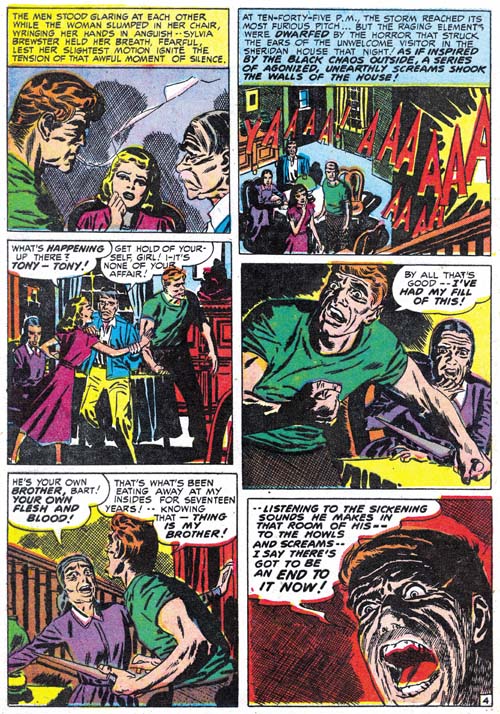
Black Magic #17 (October 1952) “Freak” page 4, pencils by Jack Kirby, inks by George Roussos
The Jack Kirby Checklist attributes the inking of this story to Mort Meskin; however the spotting is nothing like his. This can most easily be seen by the way the cloth folds are inked. Mort typically builds them up with a number of close parallel brush strokes that may overlap but usually can be detected at the ends. The cloth folds in “Freak” are nothing like that. When Mort inks Kirby pencils he usually adopts the Studio style inking. However picket fence crosshatching, drop strings or any of the other Studio style spotting techniques (see Inking Glossary) are completely absent in this story. The only reason that I can see to credit Meskin with the inking is that some of the faces have a Meskin look to them.
While Meskin is a poor match for the spotting found in “Freak” there is another artist whose inking is an exact match, George Roussos. George does cloth folds in exactly the same manner when inking his own stories. Many of the faces have a light source coming up from below. While that technique was occasionally used by other inkers, it is a common technique of Roussos.
George Roussos had a long history of inking Meskin and Meskin-like faces appear in his work from time to time. This may mean nothing more then the large influence Mort had on George’s art. On the other hand it may mean that Mort touched up parts of the story. In any case Roussos clearly did almost all the spotting for “Freaks”.
While I have attributed the pencils to Kirby this maybe another of those occasions where Jack provided nothing more than just layouts. The fact that the most Kirby-like portions are at the beginning of the story suggests that might be true. Whatever the type of pencils provided Roussos has clearly botched the job. Not only does the final result really do not do justice to Kirby, the art is actually much inferior to Roussos own work. So much for the theory that Kirby’s pencils were so good that they made a poor inker look good.
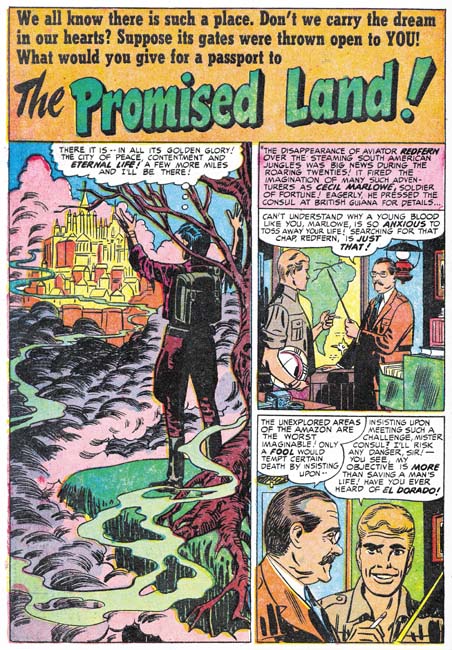
Black Magic #15 (August 1952) “The Promised Land”, art by Mort Meskin
Mort Meskin penciled two Black magic stories during this period. One, “The Promised Land”, is a nicely drawn and inked work very much up to Meskin’s high standards. There is no reason to go into detail about this work, it very much matches most of Mort’s other Black Magic efforts. While Meskin did good romance art he does seem to particularly shine in the horror genre.
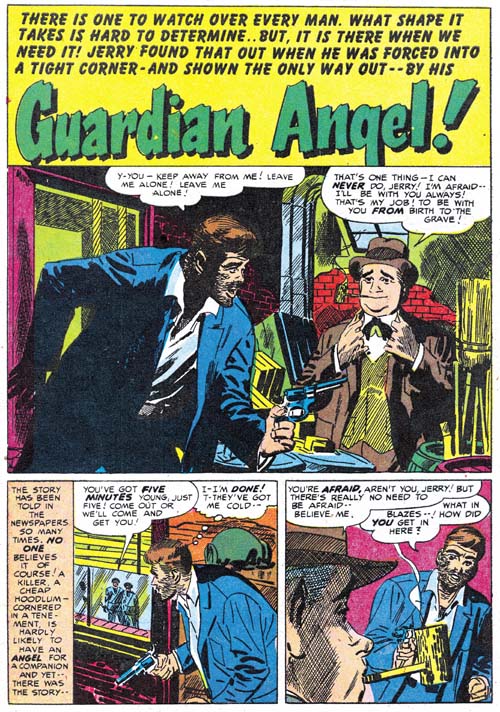
Black Magic #17 (October 1952) “Guardian Angel”, pencils by Mort Meskin, inks by George Roussos
I wish I could be as complementary about Meskin’s other contribution, “Guardian Angel”. There is a simple explanation for the disparity between the two Meskin stories from this period, “Guardian Angel” was not inked my Mort. In the chapter from The Art of Romance that covers this same period (Chapter 20) I remarked that there were some Meskin pieces that I felt were inked by George Roussos. Well Roussos’s hand is even clearer in “Guardian Angel”. This is again easiest detected by an examination of the cloth folds. They are not constructed by parallel lines as Meskin would have done but done in the same splotchy manner typical of Roussos. It would seem that having a piece inked by Roussos had unfortunate consequences at this point in time although “Guardian Angel” came off much better than “Freak”.
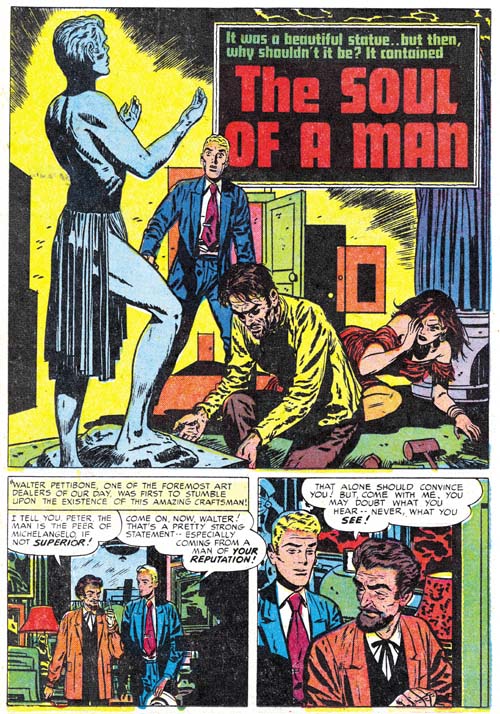
Black Magic #17 (October 1952) “The Soul of a Man”, art by Bill Draut
I never want to make it seem like Bill Draut was not doing anything worth while. His “The Soul of a Man” is particularly memorable because it includes a man physically abusing and then savagely killing a woman. Simon and Kirby were still willing to include such strong material but in a few years the Comic Code would completely eliminate such stories.
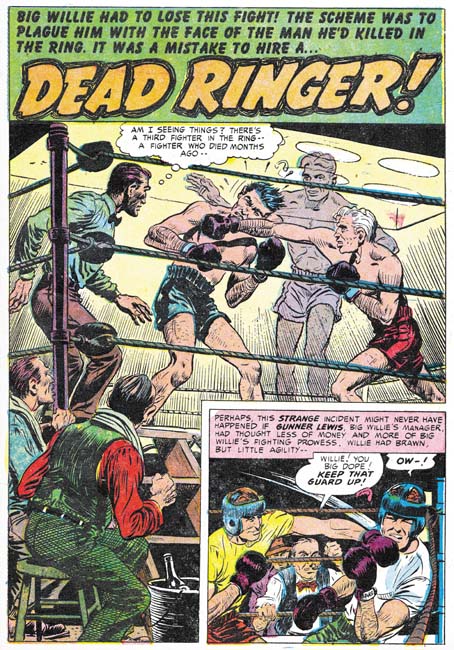
Black Magic #15 (August 1952) “Dead Ringer”, art by Bob McCarty(?)
Bob McCarty(?) has some nice work as well. No chance that Kirby provided any layouts for “Dead Ringer” because Jack certainly would not have depicted a punch like this one.
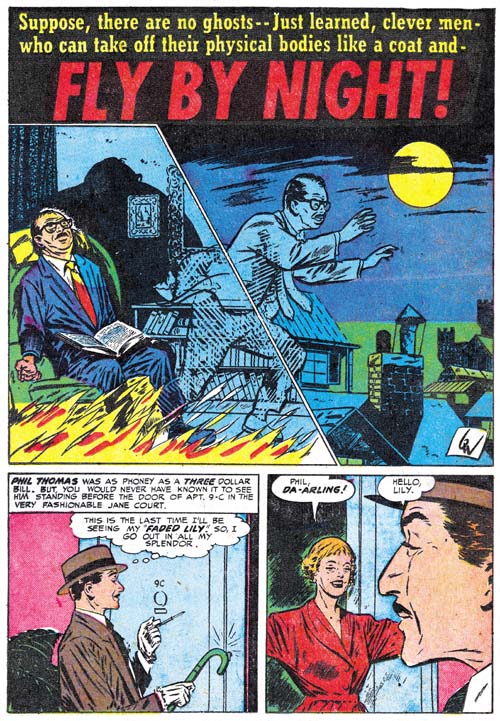
Black Magic #16 (September 1952) “Fly By Night”, art by Bill Walton
Bill Walton is not among my favorite Simon and Kirby artists but he does a nice job on the splash for “Fly by Night”. The unusual inking works quite well with the image of astral projection.
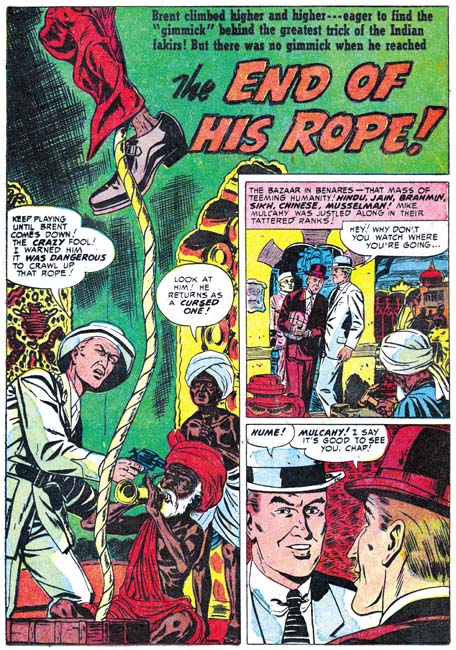
Black Magic #16 (September 1952) “The End of His Rope”, art by Al Eadeh(?)
Like Walton, Al Eadeh(?) only provides a single story. He is another artist that I am not overly fond of although he certainly competent enough.
The Little Shop of Horrors, Chapter 1 (#1 – 3), Expanding Their Fields
The Little Shop of Horrors, Chapter 2 (#4 – 6), Up and Running
The Little Shop of Horrors, Chapter 3 (#7 – 8), The Same Old Gang
The Little Shop of Horrors, Chapter 4 (#9 – 11), Another Hit
The Little Shop of Horrors, Chapter 5 (#12 – 14), New Faces
The Little Shop of Horrors, Chapter 7 (#18 – 20), Kirby Returns
The Little Shop of Horrors, Chapter 8 (#21 – 23), The Gang’s All Here
The Little Shop of Horrors, Chapter 9 (#24 – 26), The Party’s Ovetr
The Little Shop of Horrors, Chapter 10 (#27 – 29), A Special Visitor
The Little Shop of Horrors, Chapter 11 (#30 – 33), The End


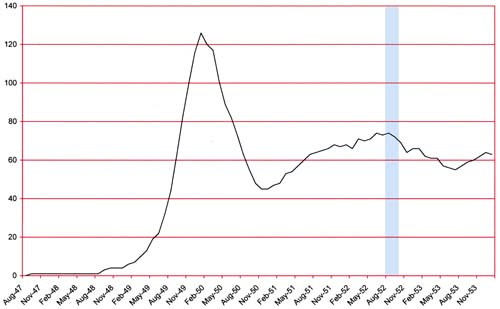
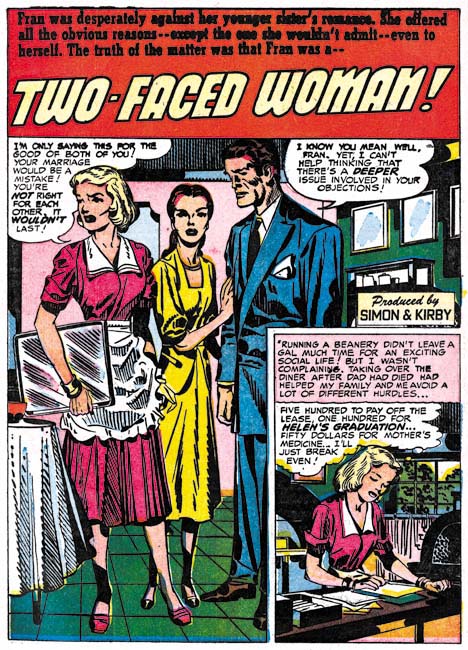
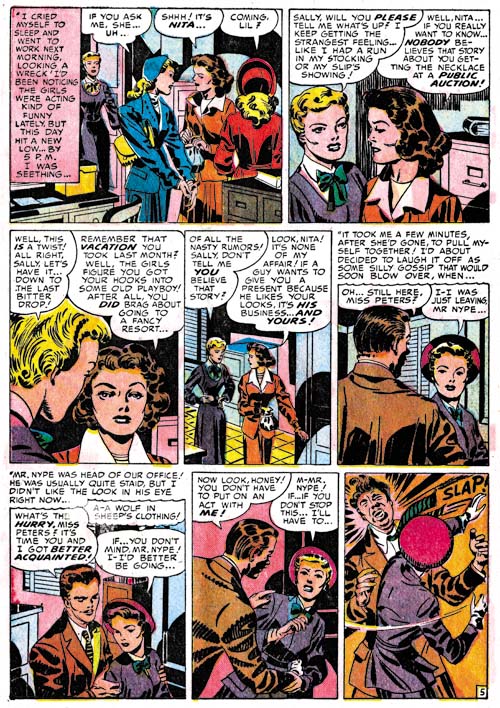
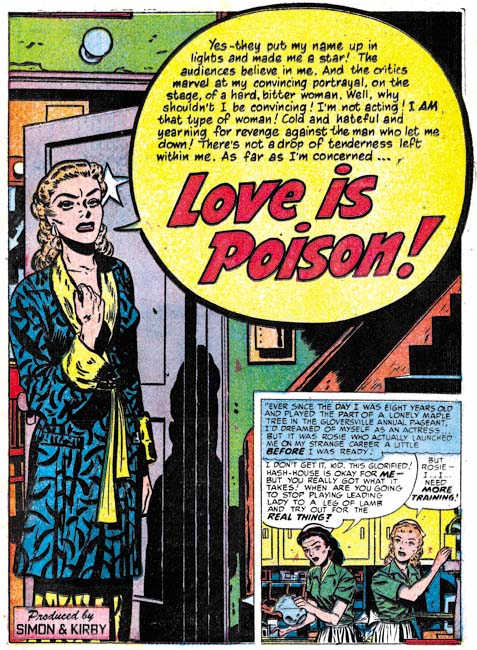
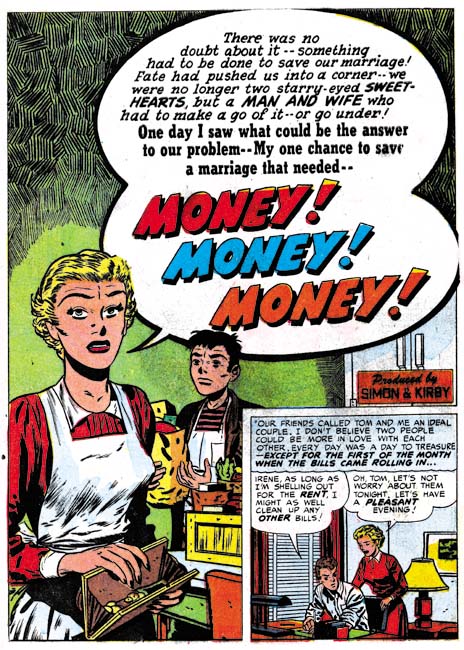

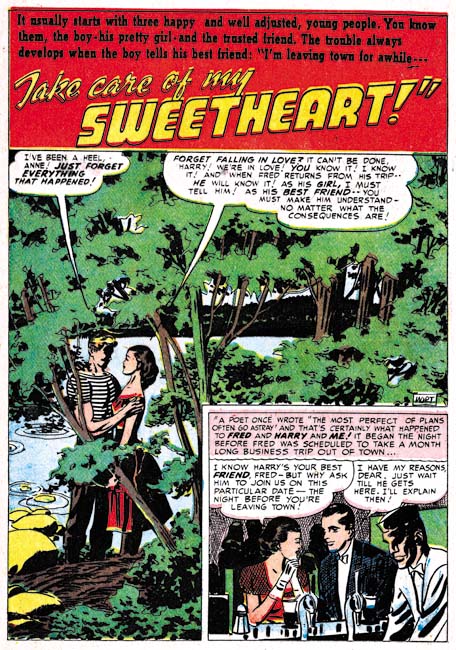
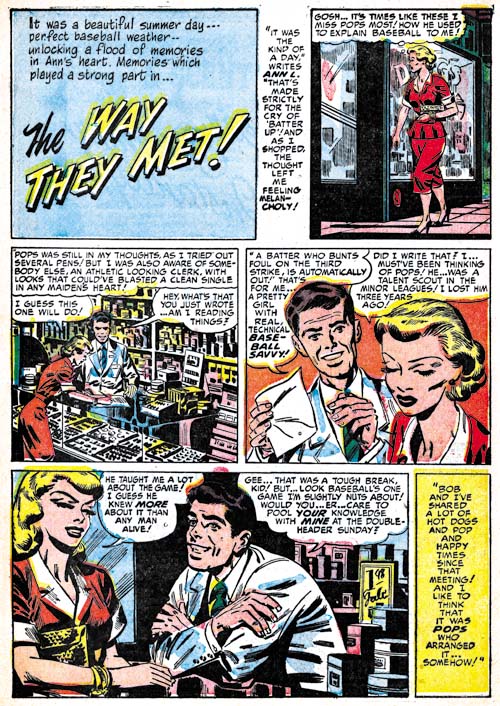
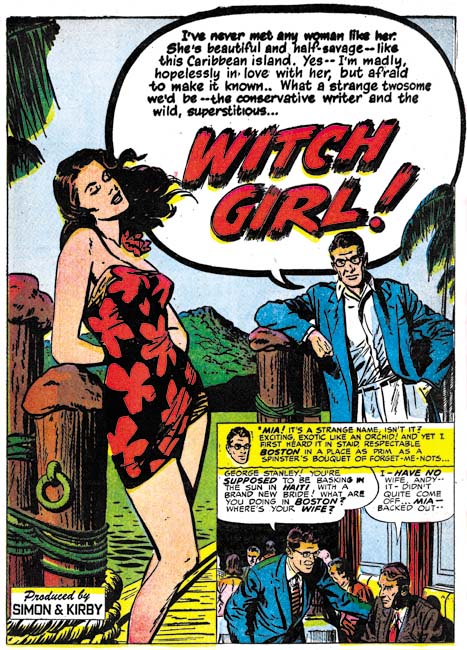


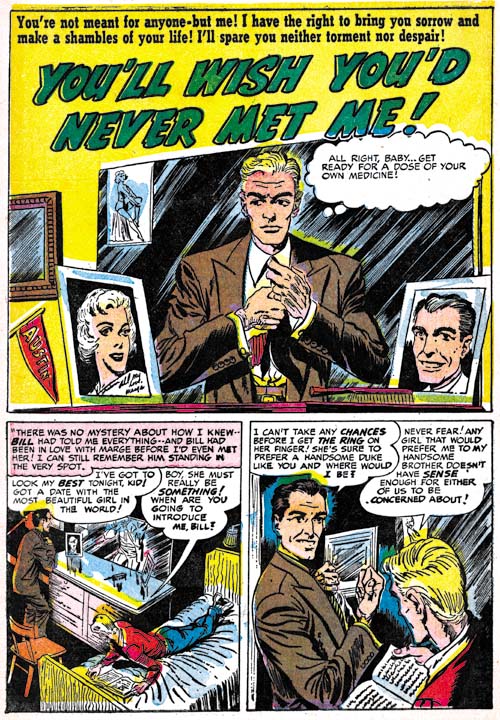
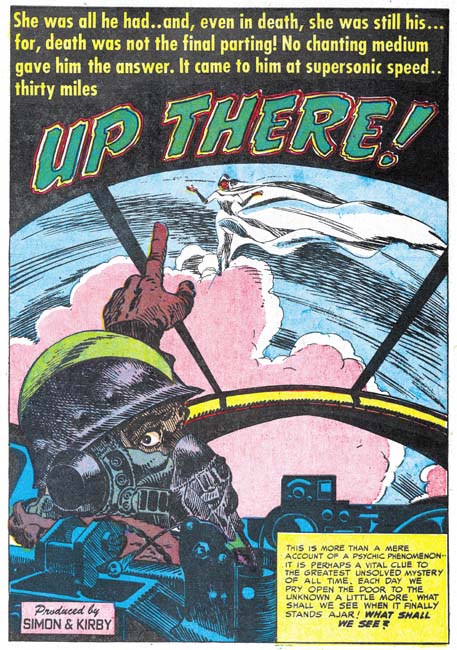

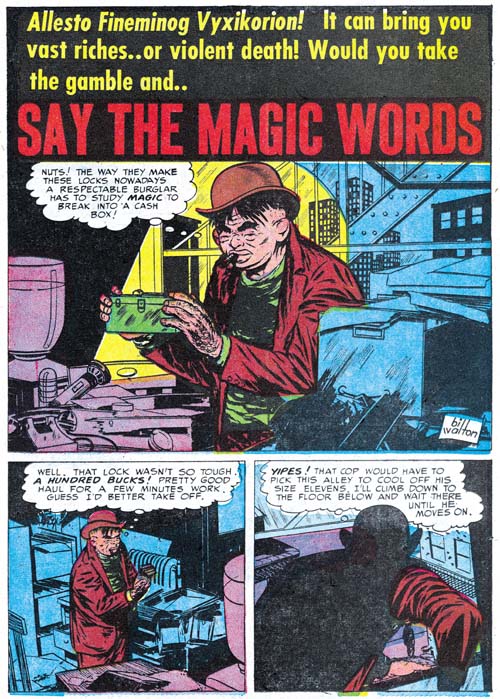
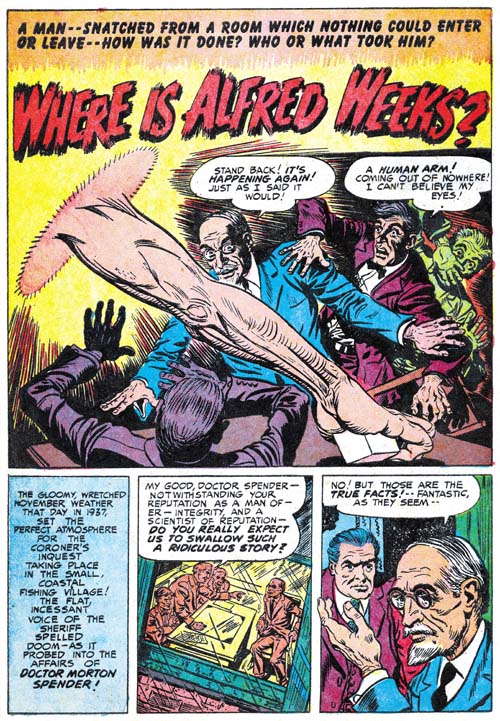

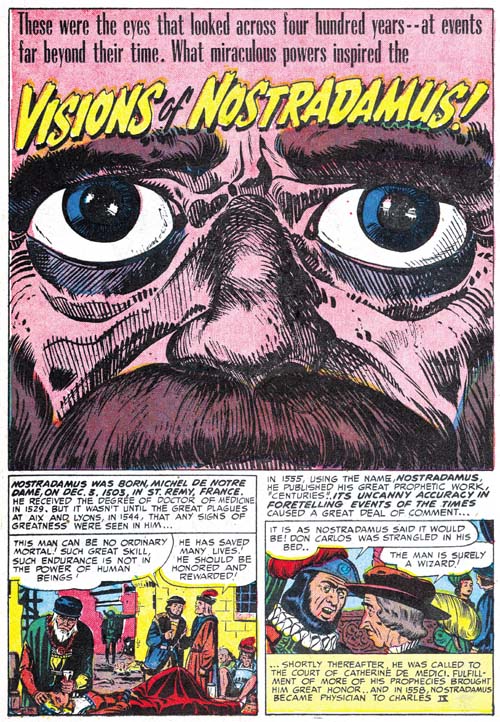
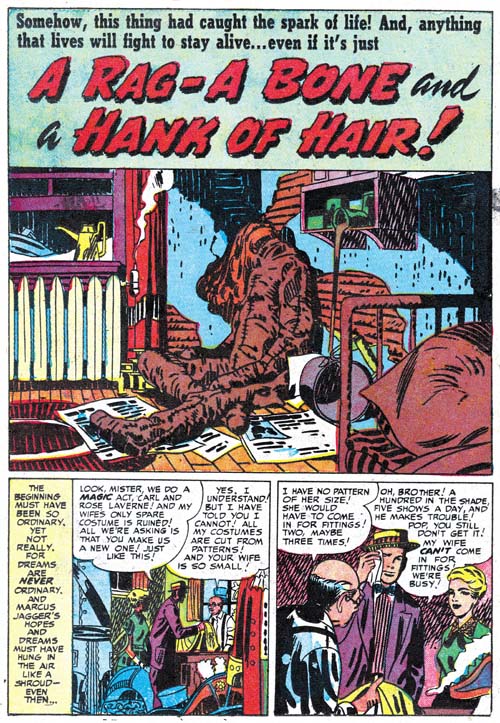

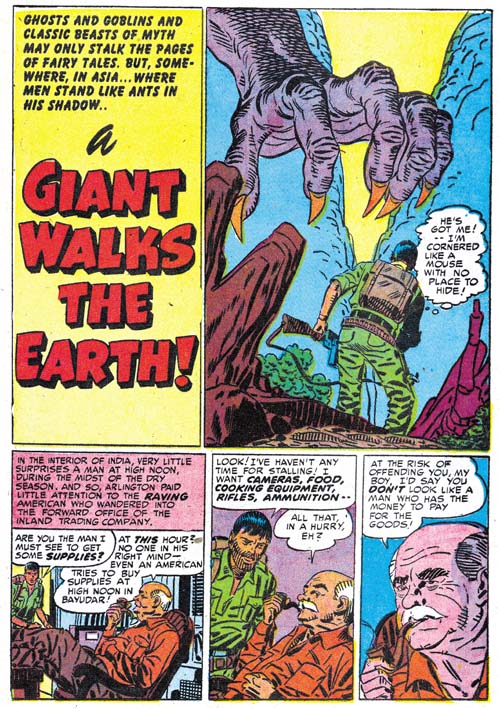

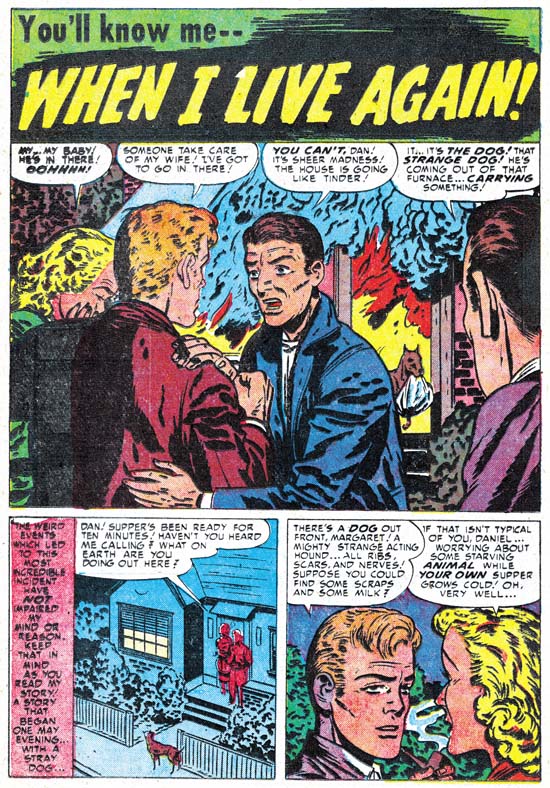
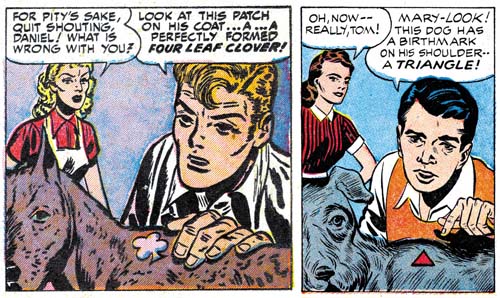
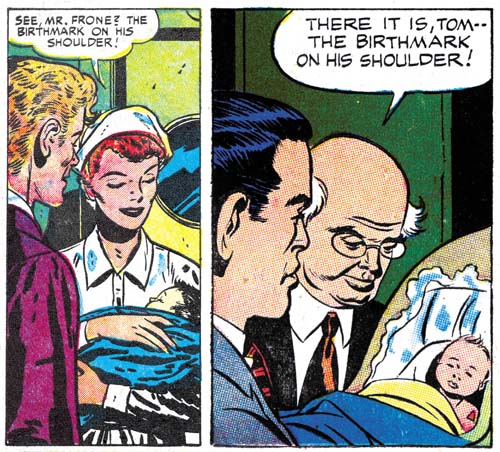
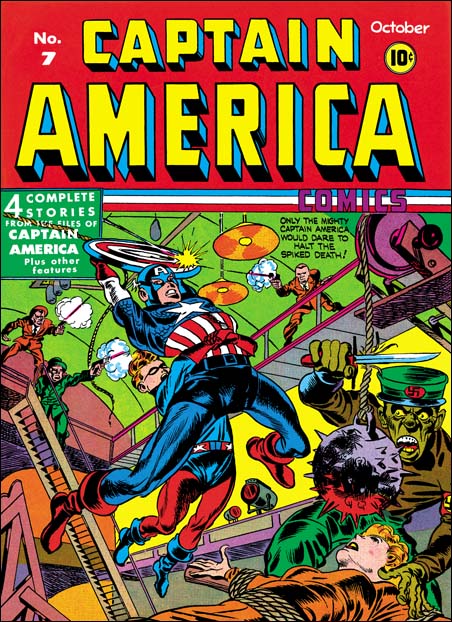
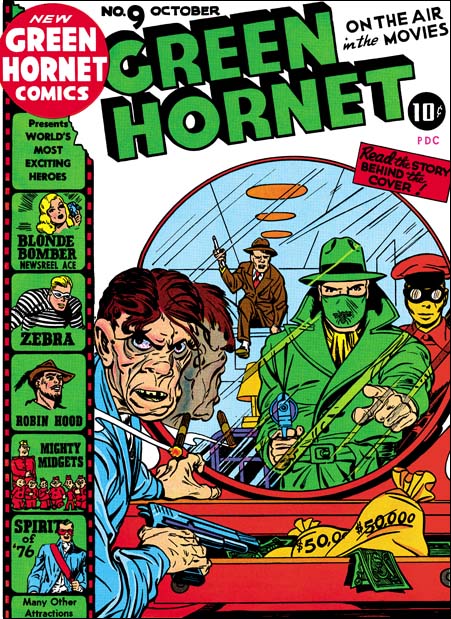
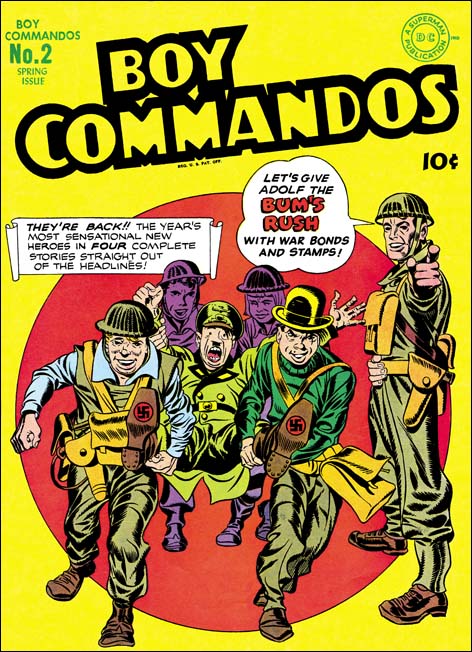

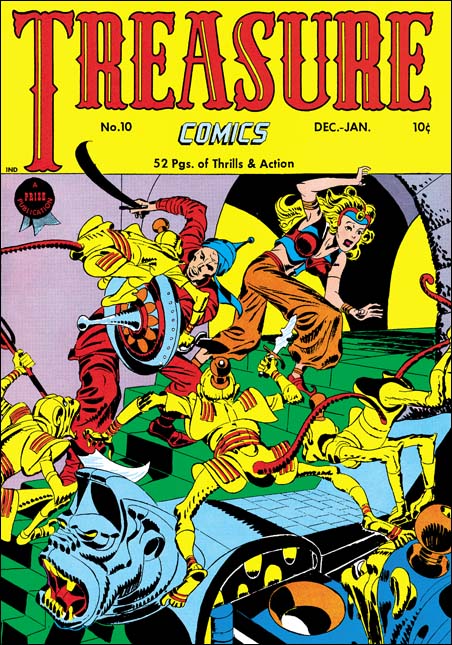



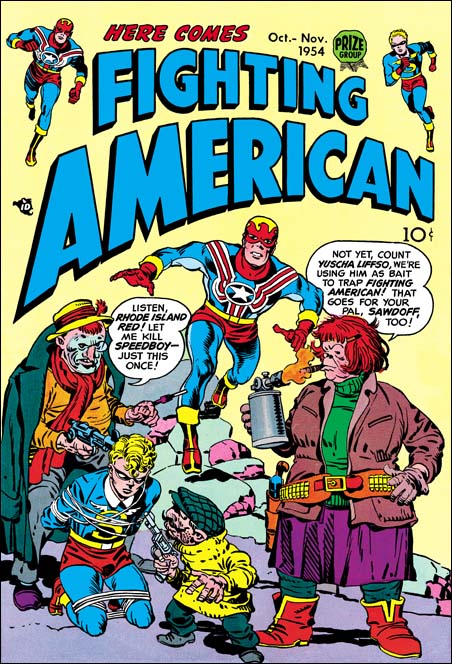


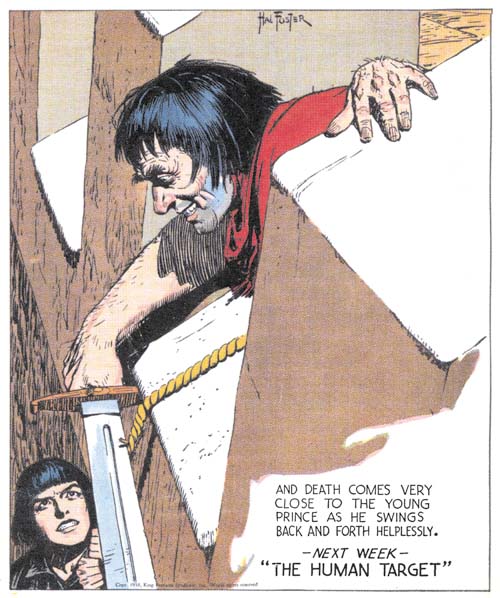
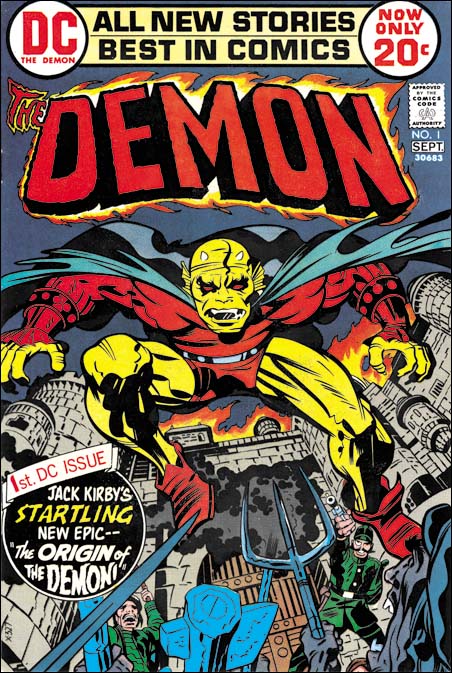
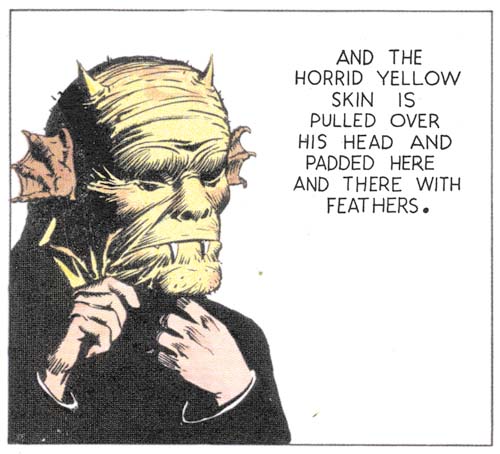
 Number of Romance Titles 1947 – 1953 (the period covered in this chapter is shaded in blue)
Number of Romance Titles 1947 – 1953 (the period covered in this chapter is shaded in blue)